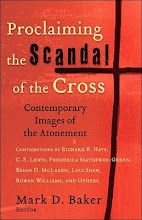
A friend of mine once invited me to go with him to see a movie in Hollywood. It was an Indie film at one of those cool, small-venue theaters, and was about a Mormon family dealing with the news that one of the sons was gay.
Another man was planning to join us that day. I had met Tom (not his real name) once or twice before, and knew that he had recently made the determination that he was gay. He was about 40 years old, single, and had been struggling with a lot of identity issues in his life. He had come to the conclusion that the source of his problem had been the denial of his sexuality.
So off we went on a Saturday morning, stopping for breakfast at a tiny Hollywood deli, and then landing at the theater about 20 minutes early. The other two had decided against the original movie choice, and instead opted for a dark mystery. That was fine with me. I like mysteries, especially dark ones.
As we were waiting, Tom and I started talking. He knew that I was, at the time, a Christian and a pastor, and he launched into an unsolicited defense of his newfound sexuality. He observed how some people think that homosexuality is a result of some childhood trauma or neglect, but that wasn’t true. People are just born that way and there’s no disputing it, he said.
I hadn’t actually been disputing anything. I was just reading movie posters and thinking about popcorn. But I felt like I’d been baited, and I knew I didn’t want to go down some no-win street with him. So, I dipped into my few remaining memory banks and remembered something from a systematic theology class I’d taken, and said this:
“Tom, I’m not smart enough to know who’s born with what and who gets things forced on them along the way. But I really can’t start my conversation with anyone in that place. I want to start as co-humans, made in the image of God. That’s something we share in common.”
Tom didn’t even respond to me, but at least, I thought, we’d gotten off that track.
We watched the movie, went to lunch, and even saw a movie star or two while we ate. Then we took off for home, but the freeway was jammed because there had been an accident somewhere off in the distance. What should have been a 40 minute drive ended up taking two hours.
But it was a very interesting two hours. Tom opened up his life (again, unsolicited) and poured out stories of abuse, neglect, and pain that he had suffered as a child. He described the sense of isolation and alienation that he had been experiencing as an adult. We talked together now as friends, hearing stories and entering into shared human realities.
I don’t know if Tom was really gay or not. I don’t know if he was just looking for some kind, any kind, of label to give his life a framework. But I do know that, on that day, homosexuality wore a real human face, not a caricature.
About a year or so later, I was doing a series of surveys for my doctoral project, asking all kinds of people about their perceptions of their own spirituality. I asked Tom to participate, and he agreed. When I asked him some of the questions on my survey, he didn’t tell me about his spirituality being based in friendships, family, mountain climbing, or a vague intuition about something “out there.” He told me about his trust in Jesus, and offered up a pretty clear Christian testimony.
Didn’t see that one coming. Go figure.























